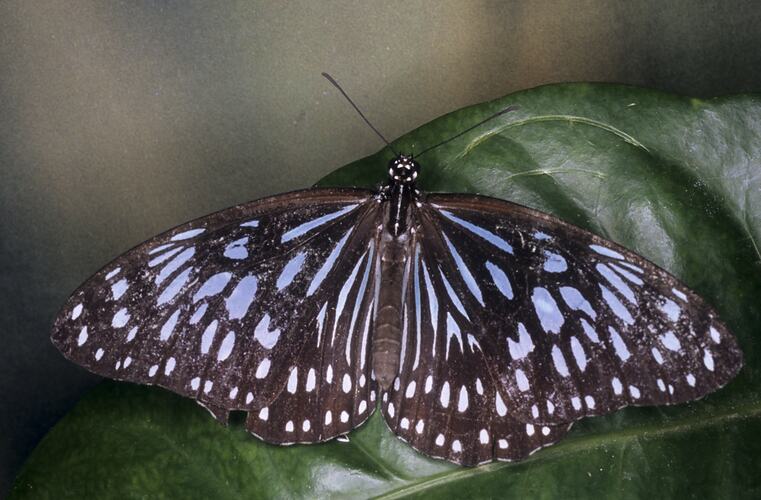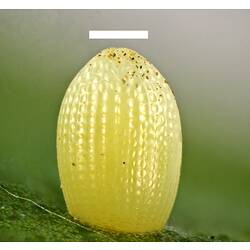General Description
Adult: Wings wider than body is long. Above: black, with blue streaks and spots. Beneath: brown-black with blue markings similar to above. Wingspan up to 72 mm. Larva (caterpillar): Greenish-grey with orange-brown line along the side and white, black and grey bands on the back. Up to 55 mm long.
Biology
Adults congregate, often in large numbers, in the north Australian dry season in gullies and breed during the summer wet season. Eggs are laid singly on the fresh growth of the larval food plant. Pupation occurs on the underside of a leaf of an adjacent tree. Blue Tigers are strong, direct fliers. It is known for its migratory flights, often of large numbers of adults. These flights extend its range inland and south into New South Wales, and more rarely to Victoria, at the end of summer or early autumn. The Blue Tiger does not breed in Victoria. Adults are long-lived.
Distribution
Fiji, Indonesia, New Zealand, Papua New Guinea, Tonga, Western Samoa, Philippines. Northern and eastern Australia, varying with season. Only one specimen has been recoded in Victoria from the far east of the state in 1962, most likely as a result of a southern migration.
Habitat
This butterfly only breeds in monsoon forest (vine thicket) and littoral rainforest that support the larval food plant. In Queensland the larvae eat Corky Milk Vine (Secamone elliptica).
More Information
-
Animal Type
-
Animal SubType
-
Brief Id
This butterfly has black wings with blue stripes and spots. The caterpillar is green-grey with white and yellow markings.
-
Colours
Black, Blue, Brown-black, Green-grey, Orange-brown, White, Grey
-
Maximum Size
72 mm
-
Habitats
-
Diet
Herbivore
-
Endemicity
-
Commercial
No
-
Taxon Name
-
Scientific Author
(Macleay, 1826)
-
Common Name
Blue Tiger
-
Other Names
Blue Wanderer
-
Kingdom
-
Phylum
-
Subphylum
-
Class
-
Subclass
-
Superorder
-
Order
-
Suborder
-
Superfamily
-
Family
-
Subfamily
-
Genus
-
Species Name
hamata



